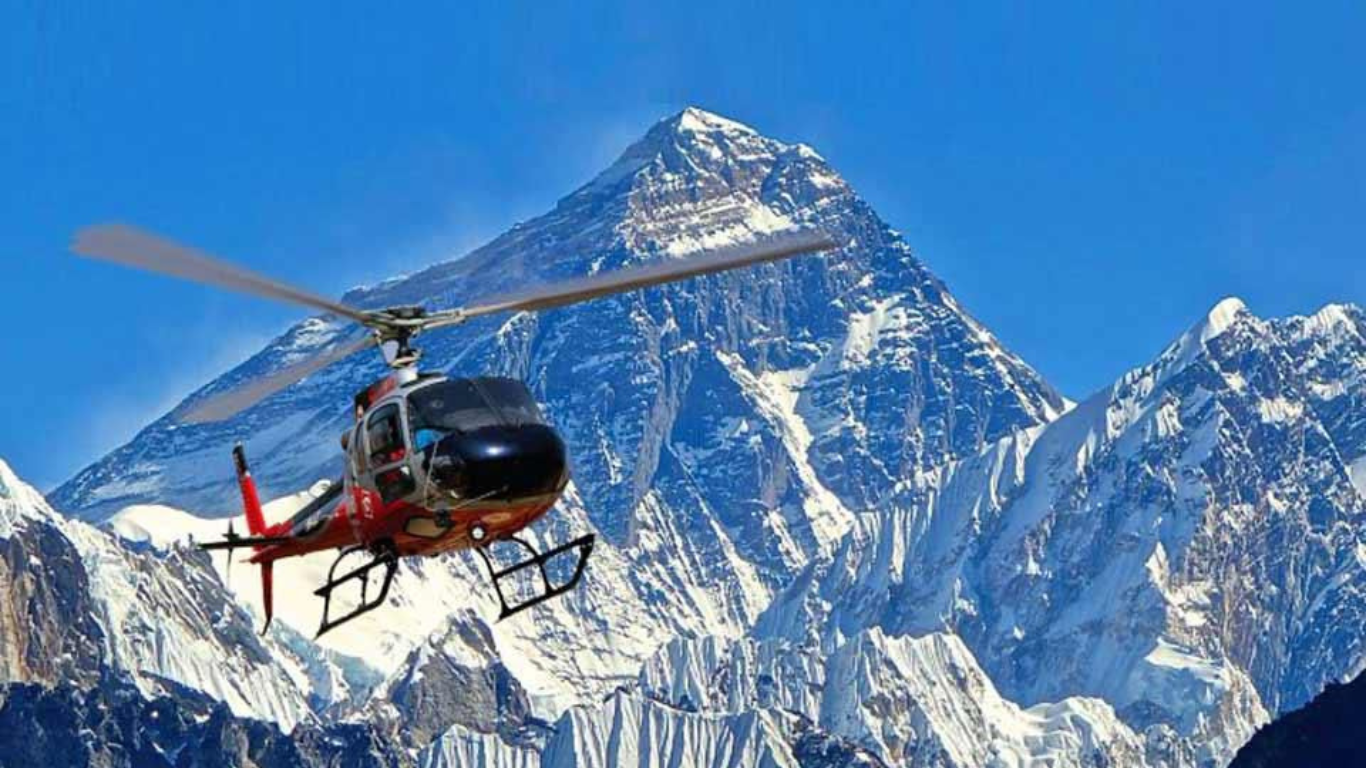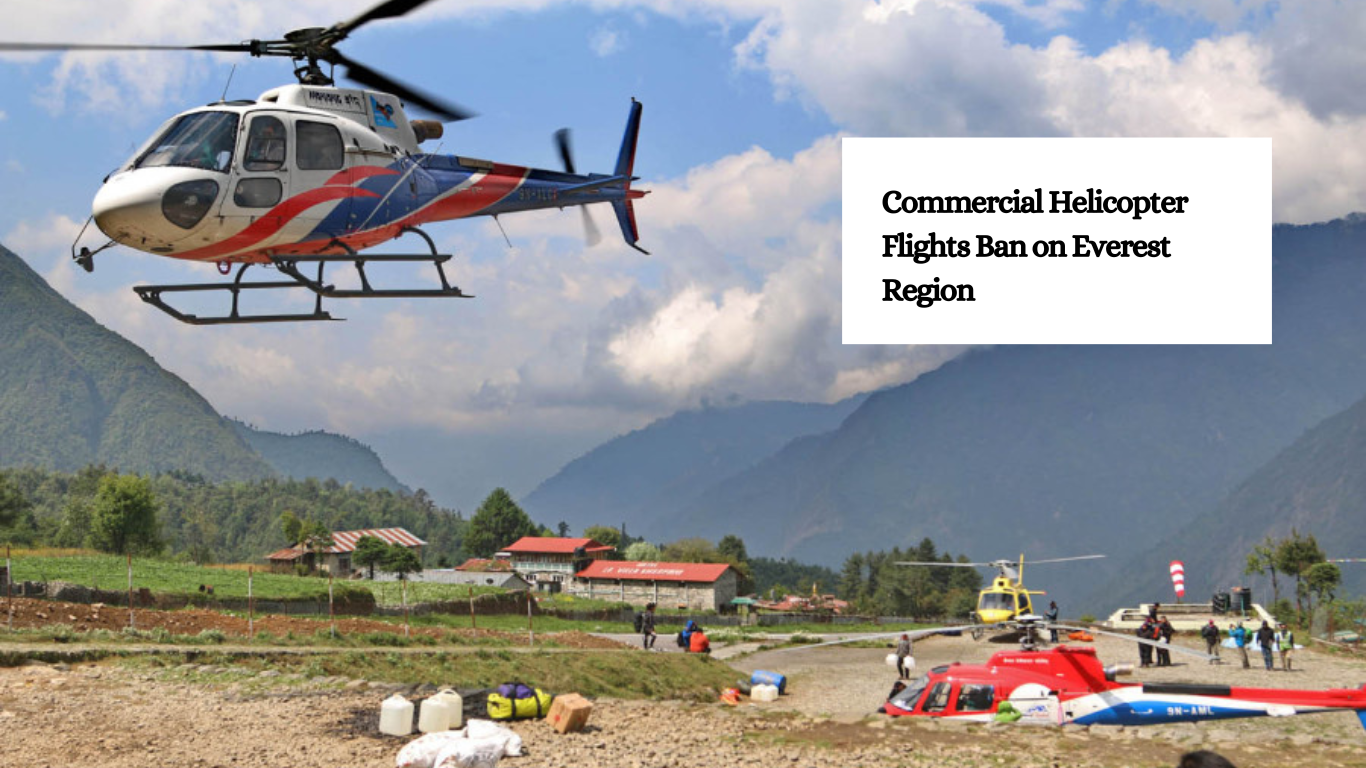The government of Nepal has announced the ban on commercial helicopter flights in the Everest region. Sagarmatha National Park, Khumbu Pasanglhamu Rural Municipality, and community stakeholders have made this decision. As per the decision, this ban will be effective from 1 January 2025. Additionally, this ban is only for commercial helicopter flights. Furthermore, it does not affect the rescue operation & transportation of goods.
This decision aims to encourage eco-friendly tourism and protect the Himalayan ecosystem. The main goal of the ban is to support tourism that cares for the environment. Over 50 flights operate daily in this area, causing noise pollution that affects locals and wildlife. It is a strong step against practices that harm the environment.
Why is Nepal to ban Helicopter Rides in Everest? What are the effects of this decision? Does it need this ban? Why do different government bodies conflict with this ban? We will explain all aspects of this ban in this blog.
Reasons Behind Nepal to Ban Helicopter Flights in Everest Region
The major reason for the helicopter flight ban is environmental issues. As per local concerned authorities, there is an increase in noise pollution due to helicopter overflighting. It directly affects the wildlife & local communities. Similarly, more helicopter flights increase the number of illegal activities in the national park. Additionally, Due to the helicopter flights, there is a low number of tourists on trekking trails. It affects the hotels & homestay of the trails. Moreover, due to helicopter flights, tourists spend less time in the Everest region.
Earlier, authorities were told not to allow flights in the restricted areas of the National Park. However, this ban has led to disagreements between different government groups. On top of that, helicopter companies are refusing to follow the decision.
Sagarmatha National Park, a UNESCO World Heritage Site in Nepal, is home to the world’s highest mountain and is designated as a protected area. The park is home to local communities, wildlife, and Mount Everest. Noise pollution severely affects wildlife, often forcing them to flee to human settlements, climb hills, or face accidents.

The park claims that most helipad areas are located in the 'core area' of the national park. People also need a permit to enter the conservation zone. Helicopter entry is considered a sensitive issue, and helicopters will only be allowed in specific places for certain purposes. Authorities made this decision because of complaints from locals and to protect the environment.
Possible Impact of Heli-Rides Ban
The ban on helicopter tours has positive and negative effects on the tourism industry. The Air Service Operators Association of Nepal estimates more than 50 helicopter flights per day at the base camp alone during the Mount Everest climb. Helicopter flights have increased the convenience and ease of climbing. The confidence of people to go to the Everest region has also increased. Helicopter flights have also increased the expenses incurred by tourists in the Everest region. Guides say that it will be very complicated to imagine tourism in the Everest region without helicopters in the future.
Some people believe that banning helicopter flights will help preserve the ecological system in the Everest region. In addition, it is also estimated that the trekking trails leading to the Everest base camp will develop tourism. Sustainable tourism focuses on minimizing the environmental footprint of travel while benefiting local communities economically and socially. This approach includes encouraging trekkers to undertake traditional trekking routes. This not only preserves the natural landscape but also provides a more authentic experience to trekkers.
The ban on helicopter flights will give a big blow to tourism in the Everest region. Therefore, the helicopter can be operated by making the flight organized and meeting the specified standards. It seems that the concerned bodies should pay a lot of attention to the environmental aspect of this area, the complaints of the locals and other various issues.
Controversy between Government agencies over helicopter flight ban
Controversy between two government agencies over new rules that ban commercial helicopter flights in Sagarmatha National Park, which includes the Everest region. This area is a protected zone in Nepal, so it has special rules and regulations. Entry is strictly controlled, and even people cannot enter freely without permission.
Nepal Civil Aviation Authority is the regulatory body of aviation. It regulates the aviation activities in Nepal. These two bodies share their approach regarding this ban. Nepal Civil Aviation Authority is not ready to accept this restriction. It has the right to decide on the aviation sector. Therefore, it says that nobody can make this decision.
Helicopter Companies not ready for Ban
There are 32 helicopters of 11 companies currently operating in Nepal. Aviation and tourism professionals say that with the help of helicopters, the tourism market of the Everest region has changed. The Airline Operators Association has opposed the ban. They have said that they will not stop flying helicopters under any circumstances. Here, the interests of the park, the Nepal Aviation Authority, and the Air Service Operators Association are not aligned.







